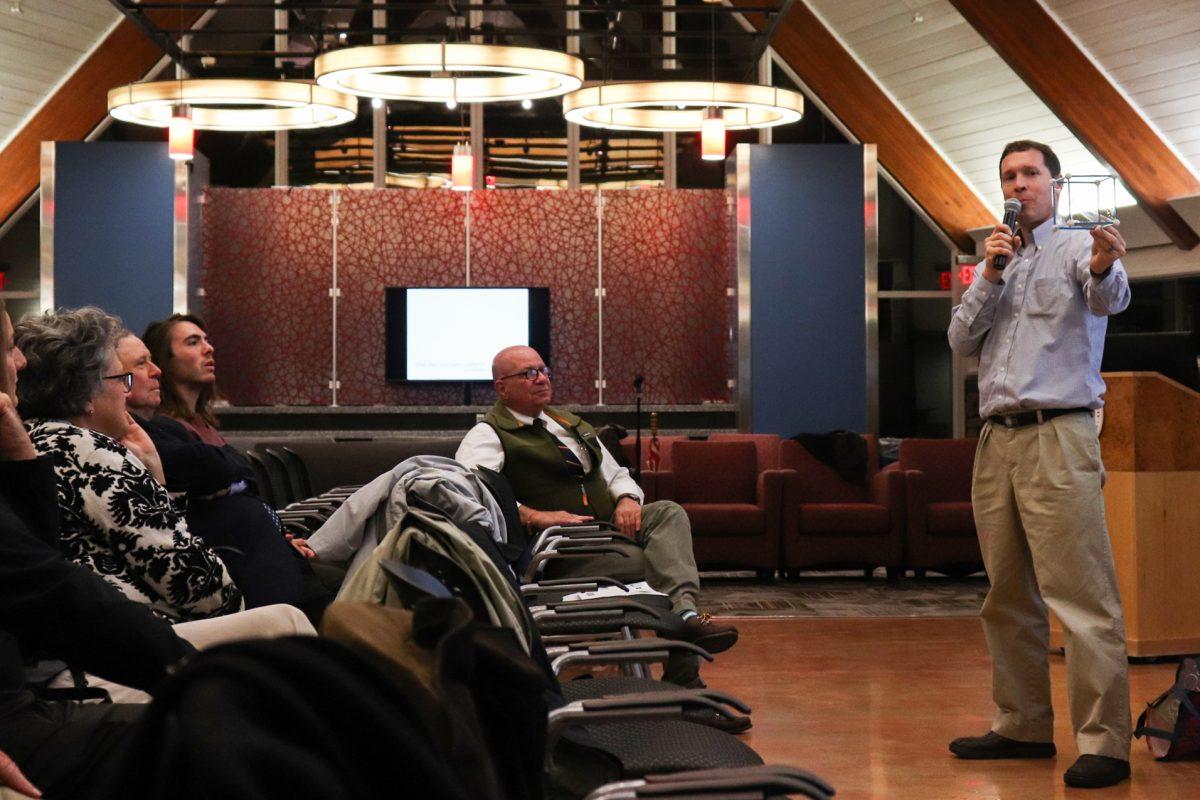The friends, family and admirers of Robert Engman gathered together in the Cardinal Foley Campus Center on Nov. 7 to remember and celebrate the artist’s work created in his lifetime of 91 years.
Robert Engman is an American sculptor best known for his minimal surface sculptures, including “Triune,” which was created in 1975. The piece is displayed at the southwest corner of Philadelphia City Hall. Robert Engman received his education from the Rhode Island School of Design and Yale University for painting and sculpture. He eventually became an associate professor and director of Graduate Studies in sculpture at Yale and then at the University of Pennsylvania.
The event began with a panel discussion between Stephen Loughin, professor of physics William Perthes, Bernard C. Watson, director of adult education at The Barnes Foundation, and Kristopher Tapp, professor and chair of the mathematics department. The discussion was focused on how Robert Engman’s sculpting does not only apply to art, but to the laws of physics and mathematics as well.
Loughin, a friend of Robert Engman’s, explained his admiration of Robert Engman’s work in relation to mathematics and physics.
“I sort of talked to him about his sculptures over a period of years,” Loughin said. “I was aware of the minimal surface connection. I think they’re just brilliant.”

It is evident that Engman’s sculptures and ideas are well respected by their viewers. Perthes expressed his belief about the uniqueness of Robert Engman’s art.
“A lot of art gives you everything all at once,” Perthes said. “But in [Engman’s] work, you go back and see something new.”
Robert Engman’s work has gone through style changes over the years. When Engman was in his 20s, he studied illustration at the Rhode Island School of Design. However, he found that illustration was too commercial and similar to graphic design, so he shifted his goals to painting and sculpture.
Robert Engman’s son, Anders Engman, was also in attendance at the event to support his father’s creation of these sculptures. Anders Engman expressed how his father found his style.
“Instead of just creating something just to create something, he started to create to represent himself and his experience and hopefully objective things outside of that,” Anders Engman said. “But as he graduated from graduate school, he became a professor at Yale. He then started to create things that are distinctly his own.”
Anders Engman also recalled a time when his father made another shift in his artistic career: when he withdrew from displaying his artwork in galleries.
“Once he did that, he really moved into the pure art of it, which he was fond of,” Anders Engman said. “He was a huge fan of that idea; being a true artist.”
Not only does Anders Engman remember his father’s journey to success, but Loughin also recognized this experience.

“He would sculpt it with his hands, then he would smooth it out and sand it out, so that process was very interesting,” Loughin said. “We would do things for each other. One time I made him a stand for one of his pieces, and he did some welding, so I did some woodwork. We had a lot of interactions.
Robert Engman was seen as not only a friend, loved one and an artist, but as an inspiration to many. Anders Engman expressed his gratitude toward St. Joe’s for displaying Robert Engman’s art. He hopes that his father’s art will inspire students on campus.
“We love to come and display in such a revered space and to have this opportunity really has been a thrill. We are really grateful for not only the beautiful spaces themselves, but the culture around it,” Anders Engman said. “I’ve seen, even in setting it up, a lot of the students appreciating his work and understanding it, hopefully in their own personal way, but understanding that there’s kind of a monumental nature to it.”














































